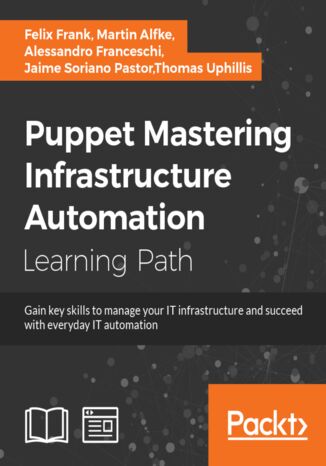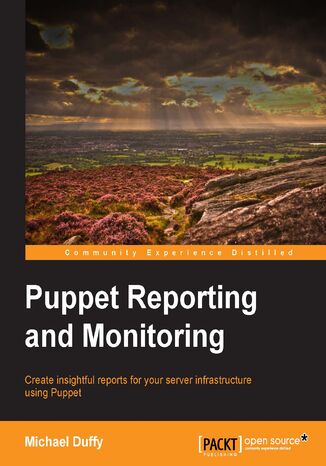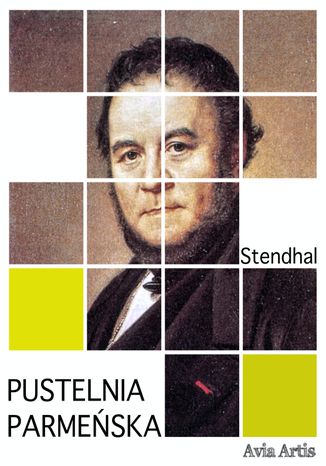Kategorien
E-Books
-
Wirtschaft
- Bitcoin
- Geschäftsfrau
- Coaching
- Controlling
- E-Business
- Ökonomie
- Finanzen
- Börse und Investitionen
- Persönliche Kompetenzen
- Computer im Büro
- Kommunikation und Verhandlungen
- Kleines Unternehmen
- Marketing
- Motivation
- Multimedia-Training
- Immobilien
- Überzeugung und NLP
- Steuern
- Sozialpolitik
- Handbȕcher
- Präsentationen
- Führung
- Public Relation
- Berichte, Analysen
- Geheimnis
- Social Media
- Verkauf
- Start-up
- Ihre Karriere
- Management
- Projektmanagement
- Personal (HR)
-
Für Kinder
-
Für Jugendliche
-
Bildung
-
Enzyklopädien, Wörterbücher
-
E-Presse
- Architektura i wnętrza
- Sicherheit und Gesundheit am Arbeitsplatz
- Biznes i Ekonomia
- Haus und Garten
- E-Business
- Ekonomia i finanse
- Esoterik
- Finanzen
- Persönliche Finanzen
- Unternehmen
- Fotografie
- Informatik
- HR und Gehaltsabrechnung
- Frauen
- Computer, Excel
- Buchhaltung
- Kultur und Literatur
- Wissenschaftlich und akademisch
- Umweltschutz
- meinungsbildend
- Bildung
- Steuern
- Reisen
- Psychologie
- Religion
- Landwirtschaft
- Buch- und Pressemarkt
- Transport und Spedition
- Gesundheit und Schönheit
-
Geschichte
-
Informatik
- Office-Programme
- Datenbank
- Bioinformatik
- IT Branche
- CAD/CAM
- Digital Lifestyle
- DTP
- Elektronik
- Digitale Fotografie
- Computergrafik
- Spiele
- Hacking
- Hardware
- IT w ekonomii
- Wissenschaftliche Pakete
- Schulbücher
- Computergrundlagen
- Programmierung
- Mobile-Programmierung
- Internet-Server
- Computernetzwerke
- Start-up
- Betriebssysteme
- Künstliche Inteligenz
- Technik für Kinder
- Webmaster
-
Andere
-
Fremdsprachen lernen
-
Kultur und Kunst
-
Lektüre
-
Literatur
- Anthologien
- Ballade
- Biografien und Autobiografien
- Für Erwachsene
- Drama
- Tagebücher, Memoiren, Briefe
- Epos
- Essay
- Science Fiction
- Felietonys
- Fiktion
- Humor, Satire
- Andere
- Klassisch
- Krimi
- Sachbücher
- Belletristik
- Mity i legendy
- Nobelpreisträger
- Kurzgeschichten
- Gesellschaftlich
- Okultyzm i magia
- Erzählung
- Erinnerungen
- Reisen
- Gedicht
- Poesie
- Politik
- Populärwissenschaftlich
- Roman
- Historischer Roman
- Prosa
- Abenteuer
- Journalismus
- Reportage
- Romans i literatura obyczajowa
- Sensation
- Thriller, Horror
- Interviews und Erinnerungen
-
Naturwissenschaften
-
Sozialwissenschaften
-
Schulbücher
-
Populärwissenschaft und akademisch
- Archäologie
- Bibliotekoznawstwo
- Filmwissenschaft
- Philologie
- Polnische Philologie
- Philosophie
- Finanse i bankowość
- Erdkunde
- Wirtschaft
- Handel. Weltwirtschaft
- Geschichte und Archäologie
- Kunst- und Architekturgeschichte
- Kulturwissenschaft
- Linguistik
- Literaturwissenschaft
- Logistik
- Mathematik
- Medizin
- Geisteswissenschaften
- Pädagogik
- Lehrmittel
- Populärwissenschaftlich
- Andere
- Psychologie
- Soziologie
- Theatrologie
- Teologie
- Theorien und Wirtschaftswissenschaften
- Transport i spedycja
- Sportunterricht
- Zarządzanie i marketing
-
Handbȕcher
-
Spielanleitungen
-
Professioneller und fachkundige Leitfaden
-
Jura
- Sicherheit und Gesundheit am Arbeitsplatz
- Geschichte
- Verkehrsregeln. Führerschein
- Rechtswissenschaften
- Gesundheitswesen
- Allgemeines. Wissenskompendium
- akademische Bücher
- Andere
- Bau- und Wohnungsrecht
- Zivilrecht
- Finanzrecht
- Wirtschaftsrecht
- Wirtschafts- und Handelsrecht
- Strafrecht
- Strafrecht. Kriminelle Taten. Kriminologie
- Internationales Recht
- Internationales und ausländisches Recht
- Gesundheitsschutzgesetz
- Bildungsrecht
- Steuerrecht
- Arbeits- und Sozialversicherungsrecht
- Öffentliches, Verfassungs- und Verwaltungsrecht
- Familien- und Vormundschaftsrecht
- Agrarrecht
- Sozialrecht, Arbeitsrecht
- EU-Recht
- Industrie
- Agrar- und Umweltschutz
- Wörterbücher und Enzyklopädien
- Öffentliche Auftragsvergabe
- Management
-
Führer und Reisen
- Afrika
- Alben
- Südamerika
- Mittel- und Nordamerika
- Australien, Neuseeland, Ozeanien
- Österreich
- Asien
- Balkan
- Naher Osten
- Bulgarien
- China
- Kroatien
- Tschechische Republik
- Dänemark
- Ägypten
- Estland
- Europa
- Frankreich
- Berge
- Griechenland
- Spanien
- Niederlande
- Island
- Litauen
- Lettland
- Mapy, Plany miast, Atlasy
- Miniführer
- Deutschland
- Norwegen
- Aktive Reisen
- Polen
- Portugal
- Andere
- Przewodniki po hotelach i restauracjach
- Russland
- Rumänien
- Slowakei
- Slowenien
- Schweiz
- Schweden
- Welt
- Türkei
- Ukraine
- Ungarn
- Großbritannien
- Italien
-
Psychologie
- Lebensphilosophien
- Kompetencje psychospołeczne
- zwischenmenschliche Kommunikation
- Mindfulness
- Allgemeines
- Überzeugung und NLP
- Akademische Psychologie
- Psychologie von Seele und Geist
- Arbeitspsychologie
- Relacje i związki
- Elternschafts- und Kinderpsychologie
- Problemlösung
- Intellektuelle Entwicklung
- Geheimnis
- Sexualität
- Verführung
- Aussehen ind Image
- Lebensphilosophien
-
Religion
-
Sport, Fitness, Diäten
-
Technik und Mechanik
Hörbücher
-
Wirtschaft
- Bitcoin
- Geschäftsfrau
- Coaching
- Controlling
- E-Business
- Ökonomie
- Finanzen
- Börse und Investitionen
- Persönliche Kompetenzen
- Kommunikation und Verhandlungen
- Kleines Unternehmen
- Marketing
- Motivation
- Immobilien
- Überzeugung und NLP
- Steuern
- Sozialpolitik
- Handbȕcher
- Präsentationen
- Führung
- Public Relation
- Geheimnis
- Social Media
- Verkauf
- Start-up
- Ihre Karriere
- Management
- Projektmanagement
- Personal (HR)
-
Für Kinder
-
Für Jugendliche
-
Bildung
-
Enzyklopädien, Wörterbücher
-
E-Presse
-
Geschichte
-
Informatik
-
Andere
-
Fremdsprachen lernen
-
Kultur und Kunst
-
Lektüre
-
Literatur
- Anthologien
- Ballade
- Biografien und Autobiografien
- Für Erwachsene
- Drama
- Tagebücher, Memoiren, Briefe
- Epos
- Essay
- Science Fiction
- Felietonys
- Fiktion
- Humor, Satire
- Andere
- Klassisch
- Krimi
- Sachbücher
- Belletristik
- Mity i legendy
- Nobelpreisträger
- Kurzgeschichten
- Gesellschaftlich
- Okultyzm i magia
- Erzählung
- Erinnerungen
- Reisen
- Poesie
- Politik
- Populärwissenschaftlich
- Roman
- Historischer Roman
- Prosa
- Abenteuer
- Journalismus
- Reportage
- Romans i literatura obyczajowa
- Sensation
- Thriller, Horror
- Interviews und Erinnerungen
-
Naturwissenschaften
-
Sozialwissenschaften
-
Populärwissenschaft und akademisch
- Archäologie
- Philosophie
- Wirtschaft
- Handel. Weltwirtschaft
- Geschichte und Archäologie
- Kunst- und Architekturgeschichte
- Kulturwissenschaft
- Literaturwissenschaft
- Mathematik
- Medizin
- Geisteswissenschaften
- Pädagogik
- Lehrmittel
- Populärwissenschaftlich
- Andere
- Psychologie
- Soziologie
- Teologie
- Zarządzanie i marketing
-
Handbȕcher
-
Professioneller und fachkundige Leitfaden
-
Jura
-
Führer und Reisen
-
Psychologie
- Lebensphilosophien
- zwischenmenschliche Kommunikation
- Mindfulness
- Allgemeines
- Überzeugung und NLP
- Akademische Psychologie
- Psychologie von Seele und Geist
- Arbeitspsychologie
- Relacje i związki
- Elternschafts- und Kinderpsychologie
- Problemlösung
- Intellektuelle Entwicklung
- Geheimnis
- Sexualität
- Verführung
- Aussehen ind Image
- Lebensphilosophien
-
Religion
-
Sport, Fitness, Diäten
-
Technik und Mechanik
Videokurse
-
Datenbank
-
Big Data
-
Biznes, ekonomia i marketing
-
Cybersicherheit
-
Data Science
-
DevOps
-
Für Kinder
-
Elektronik
-
Grafik / Video / CAX
-
Spiele
-
Microsoft Office
-
Entwicklungstools
-
Programmierung
-
Persönliche Entwicklung
-
Computernetzwerke
-
Betriebssysteme
-
Softwaretest
-
Mobile Geräte
-
UX/UI
-
Web development
-
Management
Podcasts
Puppet: Mastering Infrastructure Automation
Puppet is a configuration management tool that allows you to automate all your IT configurations, giving you control. It was written for and by system administrators to manage large numbers of systems efficiently and prevent configuration drifts. Puppet gives you control of what you do to each node, when you do it, and how you do it.This Learning Path will take you from the basics of Puppet to extending it and then mastering it. We will start off with a primer on Puppet, its installation and get a sneak peek under its hood. We will then move on to designing and deploying your Puppet architecture, learning best practices for writing reusable and maintainable code, and executing, testing, and deploying Puppet across your systems. Finally, we will deal with problems of scale and exceptions in your code, automate workflows, and support multiple developers working simultaneously.This course is based on the following books: 1)Puppet 4 Essentials - Second Edition 2)Extending Puppet - Second Edition 3)Mastering Puppet - Second Edition
Pura vida. Życie & śmierć Williama Walkera
"Pura Vida" opowiada o krótkim, lecz niezwykle intensywnym życiu Williama Walkera. Urodzony w1824 roku w Nashville, Tennessee, w rodzinie o szkockich korzeniach, był nieodrodnym dzieckiem epoki romantyzmu. Studiował medycynę i prawo, zajmował się też pracą dziennikarską, ale wszystko to nie mogło zadowolić tak niespokojnego ducha. Po śmierci narzeczonej postanowił zatem pójść w ślady swojego literackiego idola, lorda Byrona, i zorganizować własną misję wyzwoleńczą. Celem jego wyprawy stały się opanowane przez Hiszpanów kraje Ameryki Środkowej, którym zamierzał narzucić nowych władców białych i angielskojęzycznych. Wkrótce odnosi pierwszy sukces: na odbitych Meksykowi terytoriach tworzy nową Republikę Dolnej Kalifornii i zostaje jej prezydentem. Jego kolejnym celem jest podbój ogarniętej wojną domową Nikaragui. Reżim Walkera popada jednak w konflikt z właścicielem przedsiębiorstwa transportowego Corneliusem Vanderbiltem, któremu udaje się zdobyć poparcie innych państw środkowoamerykańskich i którego wielkim sprzymierzeńcem okazuje się też dżuma dziesiątkująca armię samozwańca. Burzliwe życie Williama Walkera zakończyło się w 1860 roku w Hondurasie, gdzie w wieku zaledwie 36 lat zostanie skazany na śmierć. Śledzenie jego życiorysu jest dla Devillea także pretekstem do refleksji nad fenomenem wyzwolicieli Ameryki Łacińskiej, takich jak Simón Bolívar, Augusto César Sandino, a szczególnie Ernesto Che Guevara - do dziś otaczanych w tym regionie niezwykłą czasem niemal religijną czcią w przeciwieństwie do Walkera, którego nazwisko pozostaje tam symbolem znienawidzonego uzurpatora.
Without exaggeration, a very good, rich, interesting event, an adventure and a historical novel in an epic style about the noble personality of the Tros of Samothrace. The page by page describes the incredible courage and dedication of the protagonist in the struggle for Greek freedom and independence while helping the British and Druids fight Julius Caesar.
David Routin, Simon Thoores, Samuel Rossier
With small to large companies focusing on hardening their security systems, the term purple team has gained a lot of traction over the last couple of years. Purple teams represent a group of individuals responsible for securing an organization’s environment using both red team and blue team testing and integration – if you’re ready to join or advance their ranks, then this book is for you. Purple Team Strategies will get you up and running with the exact strategies and techniques used by purple teamers to implement and then maintain a robust environment. You’ll start with planning and prioritizing adversary emulation, and explore concepts around building a purple team infrastructure as well as simulating and defending against the most trendy ATT&CK tactics. You’ll also dive into performing assessments and continuous testing with breach and attack simulations. Once you’ve covered the fundamentals, you'll also learn tips and tricks to improve the overall maturity of your purple teaming capabilities along with measuring success with KPIs and reporting.With the help of real-world use cases and examples, by the end of this book, you'll be able to integrate the best of both sides: red team tactics and blue team security measures.
"Purpurowa nić" to powieść o miłości i zdradzie, o zwątpieniu i nadziei, o rozstaniu i powrotach... Życie Sierry Madrid miało być sielanką. Wspaniały mąż. Cudowne dzieci. I pomyślne widoki na przyszłość. Ale czasami powracały we wspomnieniach Sierry słowa jej ojca: "Zobaczysz, że przez tego chłopaka będziesz jeszcze płakać!" Wtedy nie chciała w nie wierzyć, teraz zaś Alex, jej mąż, nie pozwalał o nich zapomnieć. Nagle ten doskonale poukładany świat, konstruowany z marzeń i snów, rozsypał się jak domek z kart... "Spotkanie z tą książką to dla mnie wielka odkrywcza przygoda polegająca na poznaniu wewnętrznej dynamiki małżeństwa i wewnętrznego rozwoju zarówno mężczyzny, jak i kobiety. Ten rozwój, ta progresja możliwe są tylko dzięki Chrystusowi. Polaryzacja egoizmów prowadzi do destrukcji. W miarę zbliżania się do Jezusa bohaterowie odkrywają w jakim stopniu sami dla siebie stają się przeszkodą w rozwoju." O. Jan Góra Francine Rivers, jedna z najpopularniejszych powieściopisarek amerykańskich. Autorka licznych bestsellerów, m.in. nagrodzonego wyróżnieniem Golden Medallion Award cyklu Mark of the Lion (Znamię Lwa), na który składają się trzy powieści: (Głos w wietrze, Echo w ciemności, Jak świt poranka), przenoszące czytelnika w świat starożytnego Rzymu. Poza tą trylogią, która zdobyła miliony czytelników w samych Stanach, znakomicie przyjęte przez krytyków zostały także powieści: "Szofar zabrzmiał", "Ostatni zjadacz grzechu" oraz "Dziecko pokuty".
Lęk przed stratą bywa tak samo bolesny jak strata... Nie wiadomo kiedy Alija z brzydkiego kaczątka zmieniła się w prawdziwą piękność. Wychowanka Karima Kasymowa spędza całe dnie w jego luksusowej willi jako pokojówka, ale przede wszystkim wierna przyjaciółka Fabiany, ukochanej Chana. Młoda muzułmanka coraz częściej odczuwa jednak samotność, a kiedy w rezydencji pojawia się nowy ogrodnik, przystojny Michał Chłodny, dociera do niej, że się zakochała i to z wzajemnością. Nie wie, że Michał skrywa mroczny sekret, który determinuje jego postępki. Tyko Radik, zastępca Karima, czuje niechęć do ogrodnika, ale nikt nie bierze na poważnie jego zastrzeżeń, a już na pewno nie zakochana po uszy dziewczyna. Niestety, oni wszyscy słono za to zapłacą. Alija i Fabiana padną ofiarą planów Polaka i trafią w sam środek piekła. Jaką rolę w dramacie odegra Ksenia, córka Dżamili? Kim naprawdę jest Michał Chłodny? I co sprawi, że Alija znajdzie się w miejscu, skąd nie ma żadnego wyjścia poza tym ostatecznym?
Wisła połyskiwała w blasku wschodzącego słońca. Stolica budziła się do życia, a wraz z nią tysiące mieszkańców. Upalne lato dawało się we znaki wszystkim. Rozgrzane ciała spływały potem zmieszanym z najdroższymi perfumami. Ada czuła, jak jej ciało rozpala coś więcej niż gorący powiew wiatru. Nie spodziewała się, że jedna podróż metrem może doprowadzić ją na szczyt rozkoszy. A to dopiero początek... Zmysłowa opowieść o erotycznych doznaniach bohaterki skąpanej w warszawskim słońcu. Przygotuj się na dreszcze ekscytacji i ciepło rozlewające się po całym ciele.
Ada i Zbigniew, mimo że są małżeństwem od kilku lat, wciąż pragną się tak, jak pierwszego dnia znajomości. W drugiej części opowieści lądujemy w ich wykwintnym apartamencie z lustrem nad łóżkiem, by następnie dowiedzieć się, jak zdołali się odnaleźć w tłumie przypadkowych ludzi. Już wówczas połączył ich zwierzęcy magnetyzm.
Purusza Atman Tao Sin. Wokół problematyki podmiotu w tradycjach filozoficznych Wschodu
Ołena Łucyszyna, Maciej St. Zięba
W ramach niniejszej pracy przyjrzymy się, jak pojmują podmiot różni myśliciele dwóch cywilizacji orientalnych: indyjskiej i dalekowschodniej. Przewodnikiem naszym będą terminy kluczowe występujące w tytule książki, zaczerpnięte z ich dzieł. Dla cywilizacji indyjskiej będą nimi 'purusza' osoba, człowiek oraz 'atman' się, ja, duch; dla cywilizacji dalekowschodniej 'tao', czyli droga, oraz 'sin' serce, umysł. Artykuły zostały ułożone w taki sposób, by ukazać rozwój wskazanych pojęć oraz uchwycić toczące się wokół nich debaty. Zwłaszcza debata buddyzmu z różnymi szkołami i nurtami ortodoksyjnej myśli bramińskiej oraz debata buddyzmu i taoizmu ze szkołami konfucjańskimi na Dalekim Wschodzie przyczyniły się do rozwoju wschodnich pojęć podmiotowości (drugi i trzeci rozdział książki). Współczesny rozwój tych pojęć odbywa się już w kontakcie z myślą zachodnią (trzeci rozdział pracy).
Puste naczynia. Studia z filozofii współczesnej
Przez ostatnich sto pięćdziesiąt lat w filozofii zaszły olbrzymie zmiany, dotyczące nie tylko poruszanych przez nią tematów, ale również sposobu jej uprawiania. Ta przeważnie prywatna i swobodna refleksja ludzi kierowanych naturalną ciekawością i potrzebą badania fundamentalnych zagadnień stopniowo przekształciła się w zwyczajną profesję, uprawianą pod patronatem i nadzorem instytucji, najczęściej państwowych, ocenianą i wynagradzaną niczym praca etatowych urzędników. Choć liczba publikacji filozoficznych stale rośnie, chociaż mnożą się rankingi i listy specjalistycznych czasopism oraz wydawnictw, jakość tej produkcji jest coraz słabsza i z pewnością nie ponadczasowa. Zwykły człowiek, który oczekiwałby przynajmniej prób odpowiedzi na tradycyjne filozoficzne pytania, może poczuć się zawiedziony, a ktoś, kto zna klasyków – znudzony i poirytowany. Jeśli od razu nie spotka się z deklaracją, że tradycyjne pytania są przestarzałe, będzie miał do czynienia albo z ubranymi w uczony żargon banałami, albo mętnymi zaklęciami, albo scjentystyczną paplaniną, małpującą metody i język nauk przyrodniczych lub społecznych. Jeśli dodamy do tego wszechobecne myślenie proceduralne, znajdujące wyraz w tym, że ludzie rozumują i wyrażają się tak, jak sztuczna inteligencja, okaże się, że w tej intrygującej epoce, w której żyjemy, myśl filozoficzna przeżywa głęboki regres. Zebrane w tym tomie teksty są próbą odpowiedzi na pytania o źródła i naturę kryzysu filozofii. Odpowiadając na nie, autor rozważa założenia i wartości leżące u podstaw powszechnie dziś przyjmowanego obrazu świata, technokratyczne i demokratyczne przesądy, których nie tylko nie kwestionuje się, ale zwykle nie dostrzega, a także automatycznie uznawane autorytety, kontrolujące przekaz informacji. Refleksja nad tymi zjawiskami pozwala zrozumieć, dlaczego tak rzadką postawą są dziś w filozofii sokratejska krnąbrność i sceptyczny dystans.
Piąty tom porywającej wiejskiej sagi inspirowanej historią rodzinną autorki. Tynczyn zasnuły ponure chmury okupacji. W nowej rzeczywistości ludzie przekonują się, że tak, jak nie należy wracać do przeszłości, tak i o przyszłość lepiej nie pytać. Trzeba się skupić jedynie na tym, jak przetrwać. Każdego wieczoru pojawia się strach, czy nazajutrz znów uda się przeżyć. Kolejne dni są jak ochłapy wyrwane z zakrwawionych zębów losu. Młodzi mieszkańcy Tynczyna nie wiedzą jeszcze wszystkiego o sobie, a już muszą zdawać egzamin z dojrzałości, przyzwoitości, patriotyzmu. Codziennie tracą nadzieję i na nowo ją odzyskują. Wojna zmusza ich do podejmowania decyzji, których nigdy by nie podjęli, do wybierania dróg, którymi nigdy by nie poszli. Gdy wojenny kurz opadnie, będą musieli spojrzeć sobie w oczy i odpowiedzieć na pytanie, jakimi ludźmi są teraz. Kasia Bulicz-Kasprzak - choć dziś mieszka w mieście, od lat jest związana ze wsią; od pokoleń chłopka, właścicielka niewielkiego gospodarstwa na Zamojszczyźnie. Potrafi doić krowy, prowadzić ciągnik. Odróżnia zboża jare od ozimych i zna tajniki uprawy buraków cukrowych. Niezmiennie fascynuje ją polska wieś, jej specyficzny klimat i relacje między mieszkańcami. Pisarka, matka, gospodyni
“Pustelnia parmeńska” to powieść Stendhala, słynnego francuskiego pisarza epoki romantyzmu oraz prekursora realizmu w literaturze. W powieści tej Stendhal opowiada dzieje Fabrycego del Dongo - młodszego syna mediolańskiego arystokraty i bogacza. Fabrycy, nie mogąc znaleźć w rodzinnym domu szczęścia i miłości, ucieka z Italii i przyłącza się do armii Napoleona. Bierze udział w bitwie pod Waterloo.
Pustelnia parmeńska Od tłumacza Wydając niedawno po polsku Czerwone i czarne Stendhala, poprzedziłem tę książkę krótkim życiorysem oraz charakterystyką pisarza; nie będę tedy powtarzał tych ogólnych rysów, dodam jedynie kilka słów odnoszących się do samej Pustelni parmeńskiej. Ukazała się ona drukiem w r. 1839, jako ostatni większy utwór Stendhala, pomyślana została jednakże już w r. 1832, tuż po Czerwonym i czarnym. I w istocie czuć, iż oba utwory wyrosły z jednej epoki duchowego życia pisarza, tyle odnajdujemy w nich wspólności. Wspólność — ale raczej wewnętrzna; na pozór znajdujemy się w zupełnie innym świecie. Tam Francja, tu Włochy; tam bohaterem powieści jest ambitny plebejusz, tu spieszczony arystokrata... Mimo to twórczość Stendhala jest — przy pozorach suchego obiektywizmu — tak osobista, iż znów trzeba nam w nim samym poszukać komentarza do tej Pustelni parmeńskiej. Przypomnijmy go sobie w r. 1800, kiedy jako siedemnastoletni chłopak pierwszy raz dosiada konia, aby w ślad za krewniakiem swym, Daru, podążyć do Włoch za armią Bonapartego. Młody Beyle dostaje się do Mediolanu, a siła tych pierwszych upojeń, które znalazł na ziemi włoskiej, jako jedna z żywych głosek wspaniałego rapsodu, który się tam rozgrywał, jest taka, iż w trzydzieści lat później wspomnienie ich starczy, aby mu podyktować karty rozpoczynające Pustelnię parmeńską, jedne z najgorętszych, najbardziej świeżych, jakie kiedy wyszły spod jego pióra. [...]StendhalUr. 23 stycznia 1783 w Grenoble Zm. 23 marca 1842 w Paryżu Najważniejsze dzieła: Czerwone i czarne, Lamiel, Pustelnia parmeńska, Kroniki włoskie, Pamiętnik egotysty Właśc. Marie-Henri Beyle. Powieściopisarz francuski doby romantyzmu, twórca realistycznych powieści łączących wątki psychologiczne, obyczajowe i romansowe oraz szkiców z zakresu historii sztuki i literatury. Służył w armii Napoleona I aż do odwrotu spod Moskwy; był żarliwym obrońcą pamięci Cesarza Francuzów. Serdecznie związany z Włochami i ich kulturą, napisał kilka szkiców na temat sztuki włoskiej (Historia malarstwa we Włoszech, 1817; przewodnik po Rzymie, Neapolu i Florencji), a na swym nagrobku kazał nazwać się ,,Mediolańczykiem".Kupując książkę wspierasz fundację Nowoczesna Polska, która propaguje ideę wolnej kultury. Wolne Lektury to biblioteka internetowa, rozwijana pod patronatem Ministerstwa Edukacji Narodowej. W jej zbiorach znajduje się kilka tysięcy utworów, w tym wiele lektur szkolnych zalecanych do użytku przez MEN, które trafiły już do domeny publicznej. Wszystkie dzieła są odpowiednio opracowane - opatrzone przypisami oraz motywami.
Pełna intryg, napięcia i niedomówień opowieść o miłości. Główny bohater, Fabryc del Dongo, zostaje odrzucony i wydziedziczony przez własnego ojca z powodu odmiennych poglądów politycznych. Chłopak przyzwyczajony do wystawnego życia i kontaktu z ojcem czuje się zagubiony i nieszczęśliwy. Szuka pocieszenia wśród znanych sobie kobiet. Powieść idealnie oddaje klimat dworski przełomu XVIII i XIX wieku.
- Nie masz się co tak śpieszyć, żołnierzyku - rzekła markietanka, wzruszona bladością i ładnymi oczami Fabrycego. - Nie masz dość tęgiej garści na dzisiejszą młockę. Gdybyś jeszcze miał fuzję, nie mówię: mógłbyś z niej wygarnąć nie gorzej od innych. (Fragment)
















